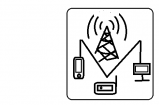How does NAT conserve IP Address Space? (and why!) – Network Address Translation
Network Address Translation, or NAT, was created to extend the life of IPv4. The world has been running out of IP addresses (for 10+ years, 🙄!). The permanent solution is to switch to IPv6. But in the mean time, we can use NAT to extend the IPv4 address space further and further.
In this lesson we’ll look at exactly how NAT extends the IPv4 address range.
This is the first video from a series of Videos where we once and for all explain NAT in an effective and practical way.
0:00 – IP Addresses
1:19 – IP Addresses are finite
2:40 – IPv6 is the long term solution
3:17 – NAT is the bridge between IPv4 and IPv6
3:49 – How does NAT conserve IP address space?
4:44 – IP space conservation example #1
5:55 – IP Space conservation example #2
7:19 – Outro
📌 Full NAT Playlist:
📌 Learn to configure / verify / troubleshoot NAT on Cisco Routers:
https://classes.pracnet.net/courses/nat-on-a-cisco-ios-router
📌 Learn to configure / verify / troubleshoot NAT on Cisco ASA, ASAx, and Firepower Firewalls:
https://classes.pracnet.net/courses/nat-on-a-cisco-asa-firewall
📌 Want to learn Networking?
📌 Want to learn Subnetting?
📌 Studying for the CCNA?
#ccna #nat #networkaddresstranslation #pat #privateip #rfc1918
Views : 27234
ipv4
Source by Practical Networking



